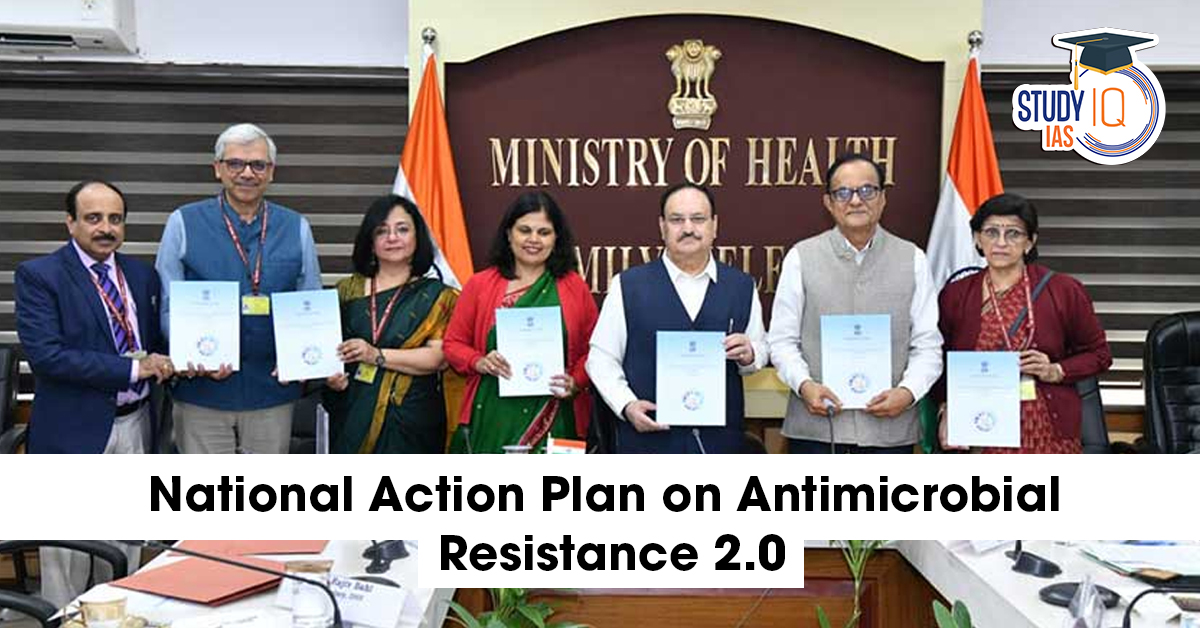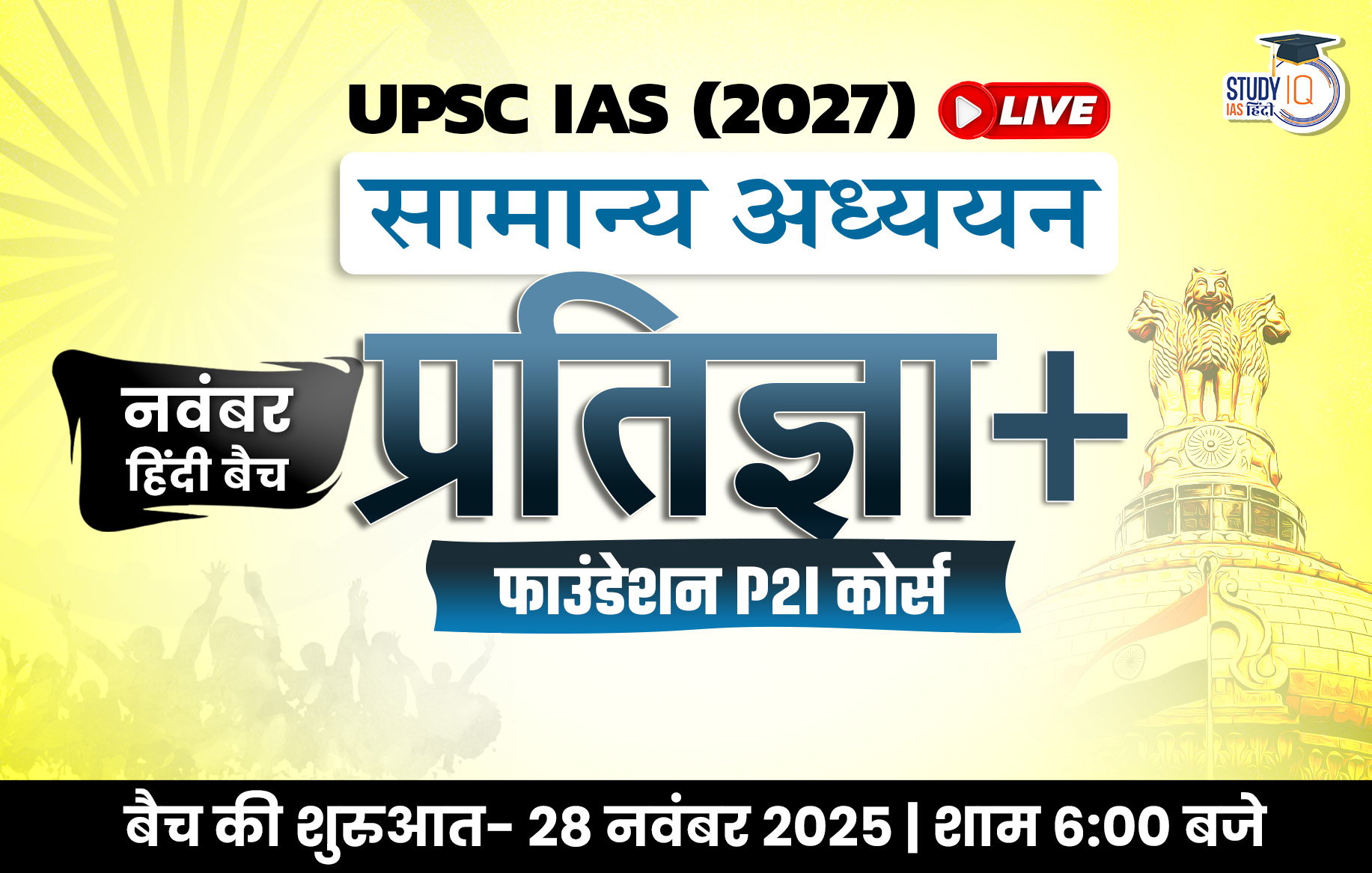Table of Contents
India has just launched the National Action Plan on Antimicrobial Resistance 2.0 (NAP-AMR 2.0) on 18 November 2025, coinciding with World AMR Awareness Week (18–24 November). This upgraded five-year strategy (2025–2029) replaces the 2017–2021 plan and introduces stronger governance, enforceable accountability, and a true One Health framework to tackle one of the biggest threats to global health in the 21st century.
What is Antimicrobial Resistance (AMR) and Why Should India Worry?
Antimicrobial resistance happens when bacteria, viruses, fungi, and parasites evolve to resist medicines that once killed them. The result? Common infections become untreatable, surgeries become risky, cancer chemotherapy and organ transplants become dangerous, and healthcare costs skyrocket.
According to the latest WHO data, 1 in every 6 bacterial infections worldwide is now resistant to antibiotics, and India remains one of the highest contributors to the global AMR burden because of overuse and misuse of antibiotics in humans, animals, and agriculture.
From NAP-AMR 1.0 to 2.0: Learning from the Past
The first National Action Plan (2017–2021) laid the foundation but faced challenges:
- Poor inter-ministerial coordination
- Limited private-sector participation
- Weak ownership and accountability
NAP-AMR 2.0 directly addresses these gaps with sharper tools and stricter enforcement.
Six Strategic Pillars of NAP-AMR 2.0
The new plan revolves around six interconnected objectives:
- Awareness, Education & Training Nationwide campaigns targeting doctors, veterinarians, farmers, pharmacists, and the public to drive behavioral change.
- Surveillance & Laboratory Strengthening Expansion of ICMR’s AMR surveillance network (currently 30 hospitals) and new environmental monitoring of antibiotic residues in wastewater from hospitals, farms, and pharma units.
- Infection Prevention & Control (IPC) Mandatory IPC programs in all healthcare facilities to reduce the need for antibiotics in the first place.
- Antimicrobial Stewardship (AMS) Evidence-based guidelines to ensure antibiotics are used only when necessary — across human medicine, veterinary practice, and agriculture.
- Research & Innovation Continued support to the India AMR Innovation Hub and development of new diagnostics, vaccines, and alternatives to antibiotics.
- Governance & Coordination (elevated as a standalone pillar) Over 20 ministries and departments must now submit their own time-bound, budgeted action plans — a game-changing shift from voluntary cooperation to enforceable accountability.
The Game-Changer: Real Accountability & One Health Integration
For the first time:
- Every stakeholder ministry has to create its own detailed implementation roadmap with budgets and deadlines.
- Regular high-level inter-ministerial review meetings are institutionalized.
- Environmental surveillance of antibiotic residues from pharmaceutical industries, hospitals, and farms is now mandatory.
This is a true One Health approach that connects human health (MoHFW, NCDC, ICMR), animal health (DAHD, ICAR), agriculture, and environment ministries under one umbrella — fully aligned with the Quadripartite Global Action Plan (WHO, FAO, WOAH, UNEP).
Highlights Already Showing Results on the Ground
- Kerala and Gujarat banned over-the-counter antibiotic sales years ago — a model now being scaled nationally.
- Growth-promoting antibiotics in food animals are progressively restricted.
- ICAR-NDRI’s point-of-care mastitis diagnostics help farmers treat cattle without blindly using antibiotics.
- The India AMR Innovation Hub continues to attract global funding and partners.
What NAP-AMR 2.0 Means for You
- Safer hospitals with stricter infection control
- Fewer unnecessary antibiotic prescriptions
- Cleaner environment with less antibiotic pollution from factories and farms
- Better availability of effective antibiotics when you actually need them
The Road Ahead (2025–2029)
Success will depend on three things:
- Sustained political will and funding
- Active participation of the private healthcare and pharmaceutical sectors
- Real behavioral change among doctors, farmers, and citizens
As Union Health Minister rightly said during the launch: “Antimicrobial resistance is not a problem any single sector can solve alone. It demands collective, accountable, and continuous action.”
India’s NAP-AMR 2.0 is now one of the most comprehensive and ambitious national strategies against superbugs in the world. If implemented with the rigor it demands, it has the power not only to protect 1.4 billion Indians but also to set a gold standard for other high-burden countries.


 India Re-Elected to Codex Alimentarius C...
India Re-Elected to Codex Alimentarius C...
 Rights of Transgender Persons in India 2...
Rights of Transgender Persons in India 2...
 Climate Change Performance Index (CCPI):...
Climate Change Performance Index (CCPI):...

























